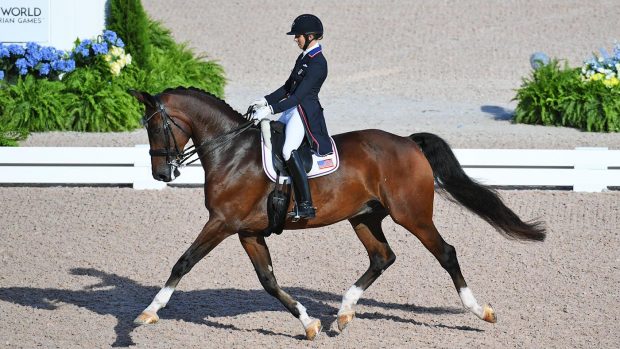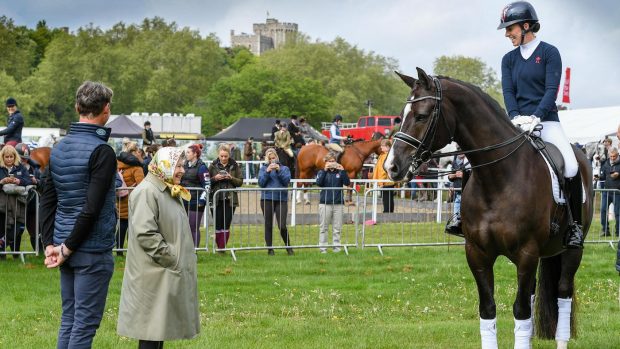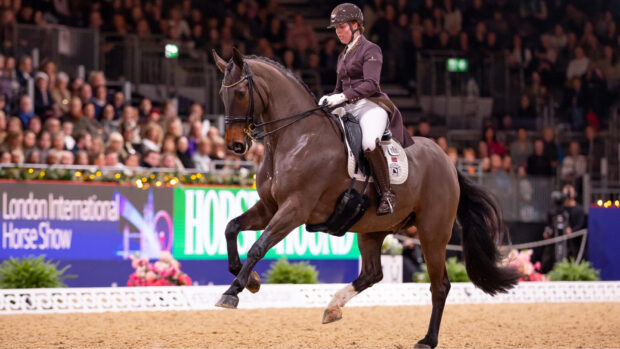Read all the latest dressage news
To the uninitiated, the language used in the horseworld can be impenetrable and may appear deliberately exclusive. H&H is here to help out with some jargon-busting…
Above the bit
The horse holds his muzzle forwards and upwards, usually higher than the rider’s hands, to avoid accepting contact through the reins.
Behind the bit
The horse’s neck is rounded, but he has dropped the contact with the rider through the reins by drawing his nose into his chest. A fault sometimes caused by excessive use of draw-reins or a rider who “seesaws” on the reins.
On the bit
The horse accepts the bit without resistance, his jaw is relaxed, his neck arched and he is round and supple, connected, via the topline, from the hindleg into the rider’s contact.
Balance
Relative distribution of the weight of horse and rider upon the fore and hindlegs (longitudinal) and the left and right legs (lateral). Loss of balance means sudden increase of weight on to the forehand and/or to one side (lengthening or widening the base of support).
Behind the vertical
Seen from the side, the horse’s nostrils are behind an imaginary vertical line dropped from its eye to the ground, usually a rider fault.
Behind/in front of the movement
A rider balance fault, when the rider is out of sync with the horse, reacting too slowly or anticipating the stride, usually in trot.
Between hand and leg
All about balance: the horse is moving forward willingly off the leg, while working into a light and supple contact through the reins.
Collection
The ultimate goal for the dressage horse. Collection involves the lowering of the croup, lightening of the forehand to create shorter and higher uphill steps. It is possible in the walk, trot and canter.
Contact
The term used to describe the communication between horse and rider via the reins, achieved when the horse is accepting and responding to the rider’s seat and leg aids.
Counter-canter
In which the horse canters leading with the outside leg, not the inside and is bent to the outside. Used as a test of obedience and
natural balance, especially in event and dressage horses.
Elasticity
The ability to stretch and contract the body’s musculature smoothly, giving the impression of swing and springiness.
False outline
The horse’s head carriage may appear correct, but he is evading the contact by becoming rigid and avoiding the contact and not using the correct muscles over his topline.
On the forehand
The horse is unbalanced through its length and puts too much of his weight on his forelegs. Even on level ground it feels – and looks – as if he is going downhill.
Throughness
Imagine a circuit of energy between horse and rider: the rider’s leg aids encourage energetic pushing movement in the horse’s hindlegs and quarters, which push his back upward, which in turn allows for connection with the front end and the bit. The connection felt in the bit transmits a feeling of energetic movement back to the rider. This is the ideal in which the horse is said to be “through”.
Uphill
Longitudinally well balanced as a consequence of desirable conformation and engagement of the hindquarters, which allows the back muscles to assist in elevating the forehand, and engagement of the abdominal muscles to lift the forehand. The pushing forces from the hindlimbs are balanced with the elevating forces from the forelimbs. The horse propels himself forwards and slightly upwards, with a lowered croup.
Do you want to read all the latest dressage news
The full feature on jargon in the horseworld was first published in the 23 February issue of H&H



